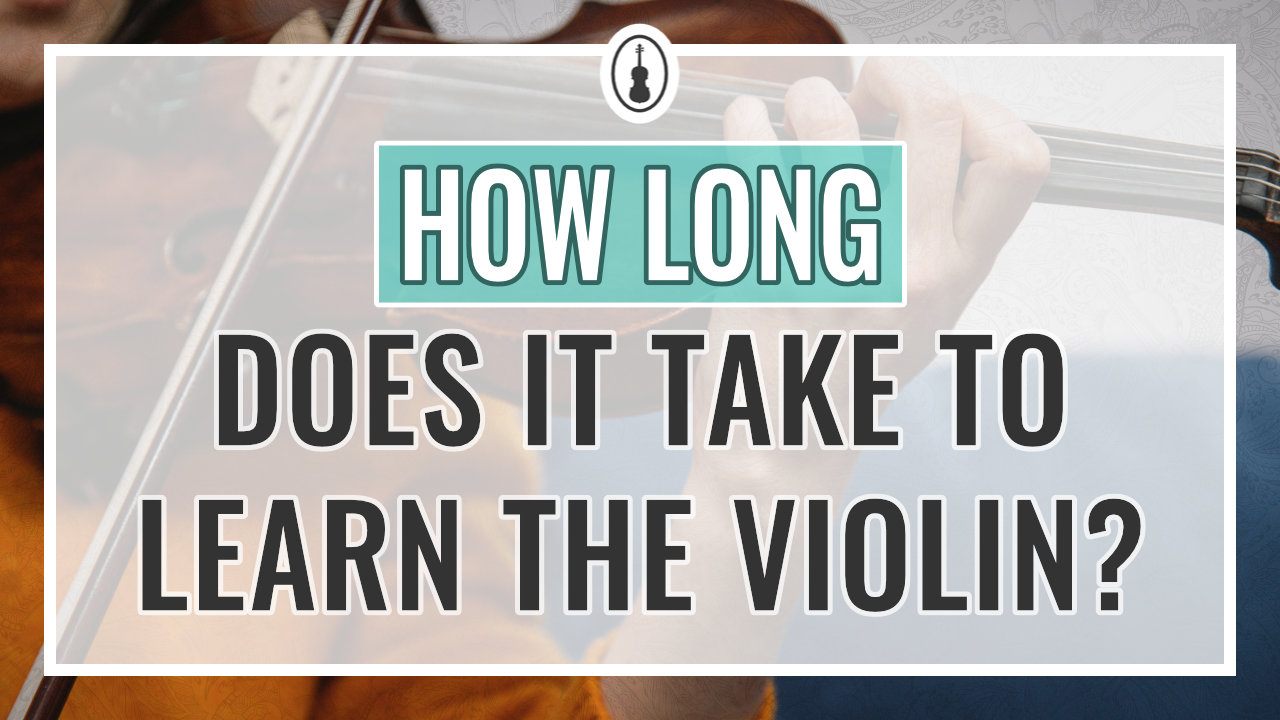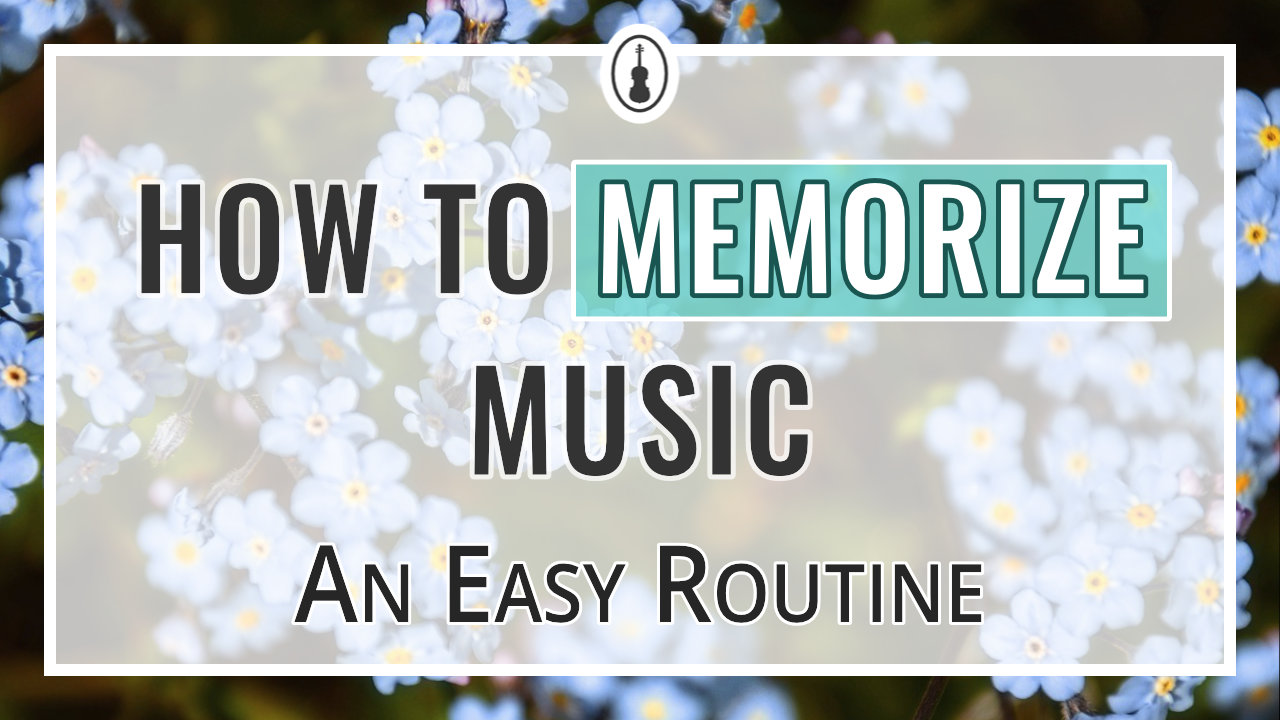Easy guide to learning chromatic scale on the violin
Even if you’re a beginner violinist, you probably have heard of scales, as well as the benefits of studying them (have a look here if you haven’t), and that there are basically two types of them: major and minor.
This is a simplification of the various types of scales existing, and one of them is the chromatic scale. But what it is and how does it benefit you? In this article, I’ll explain it all, as well as provide you with exercises and examples of music pieces that use the chromatic scale.
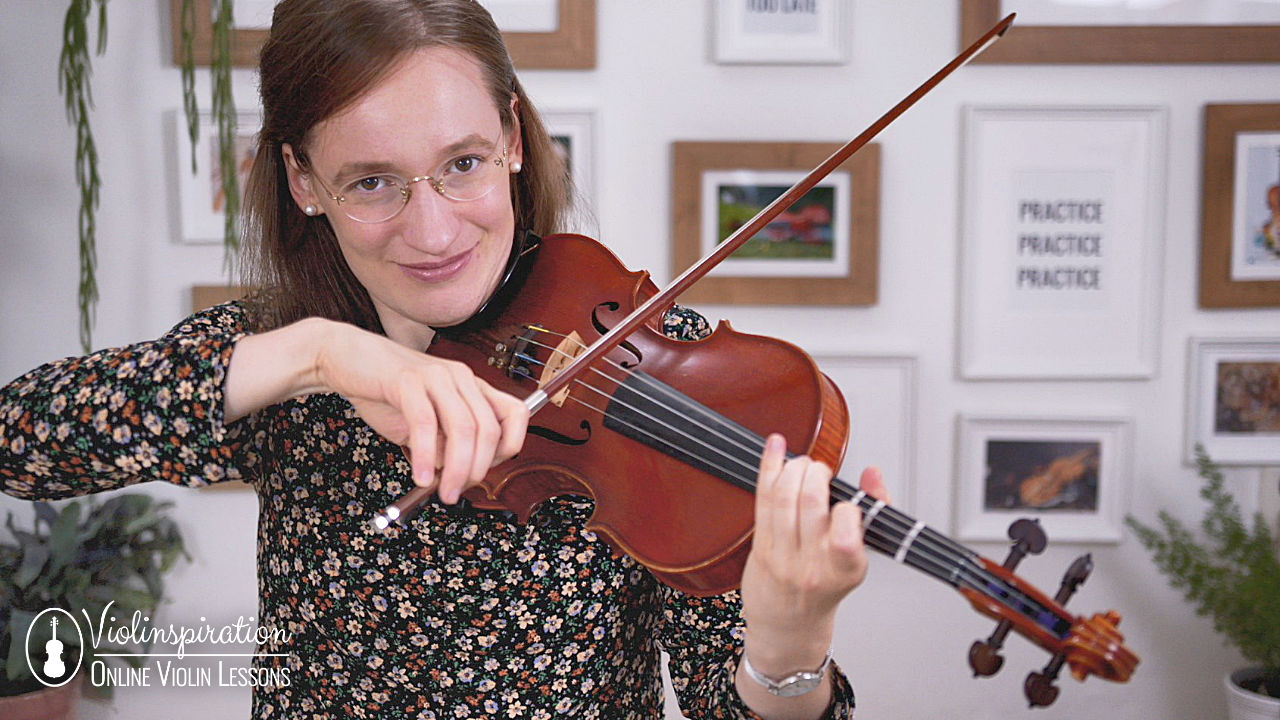
Even before you start reading, you can download the free booklet with chromatic scales here:
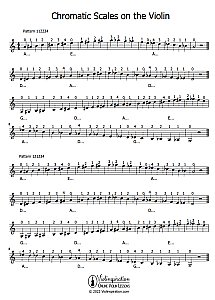
Chromatic Scales for Violin
Free Exercises Set
What is a chromatic scale on the violin?
A chromatic scale is a scale that consists of all semitones within one octave. It is also known as a 12-tone scale because it uses all 12 tones in sequence.
You’ll find several applications of the chromatic scale in fast passages and changes of position in several music pieces.
In western music, we usually use tones and semitones, even though the violin and other instruments can produce microtones (smaller pitch intervals than a semitone). If you’re not familiar with the intervals yet, check out my article about half steps and whole steps to get all caught up with semitones, the octave, etc.
What notes are in the chromatic scale?
The chromatic scale includes all twelve pitches within an octave. Starting on the C note, the notes are as follows: C, C♯, D, D♯, E, F, F♯, G, G♯, A, A♯, B, and the scale ends with C one octave higher than the starting C note.
To have a better understanding of this, imagine a piano keyboard, where each note has its key. A chromatic scale on the piano would be executed by playing the sequence of all white and black keys within a chosen octave.
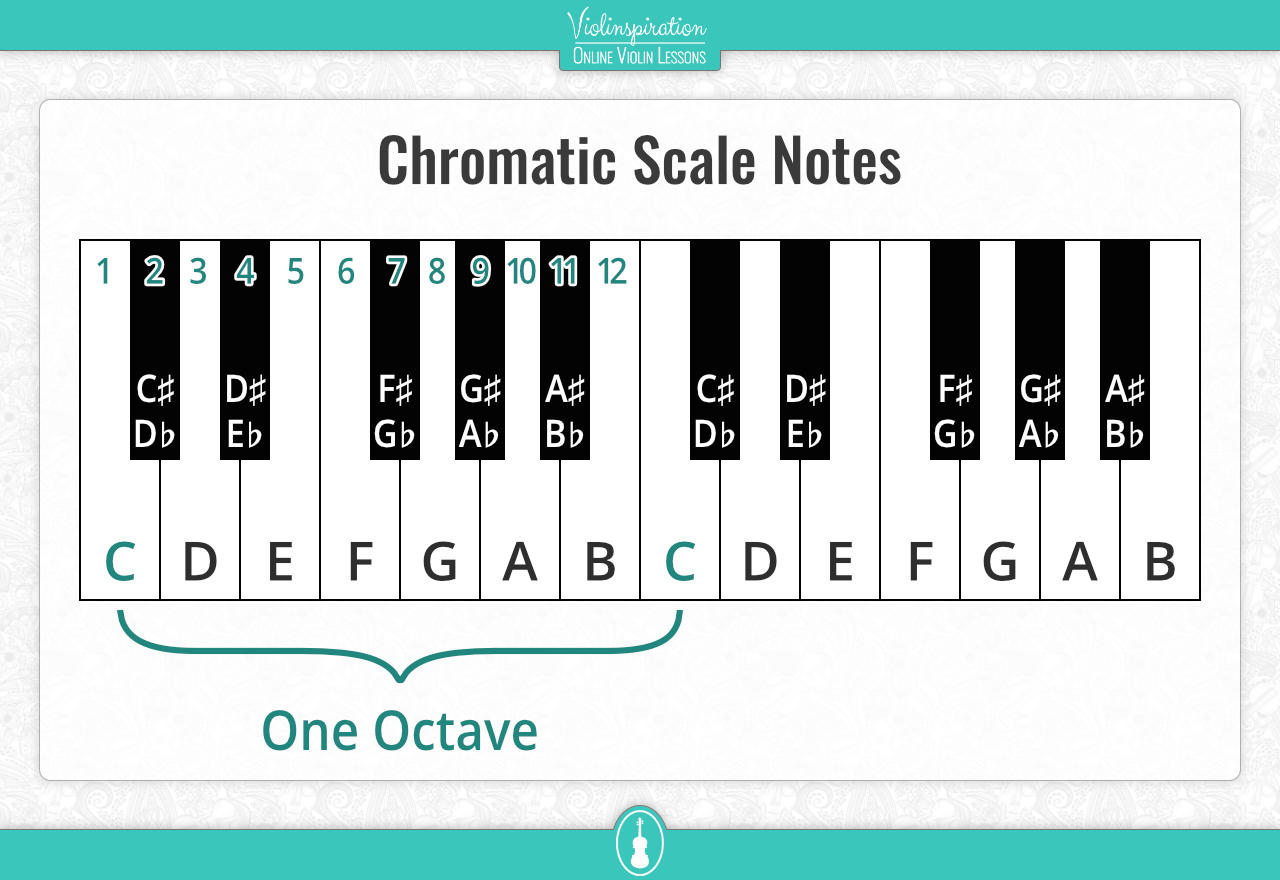
If you’re trying an easier scale on the violin, such as a scale starting on the G note, you will play the notes: G, G#, A, A#, B, C, C#, D, D#, E, F, F#, G.
Have a look at the whole violin fingerboard to see where are all the notes:
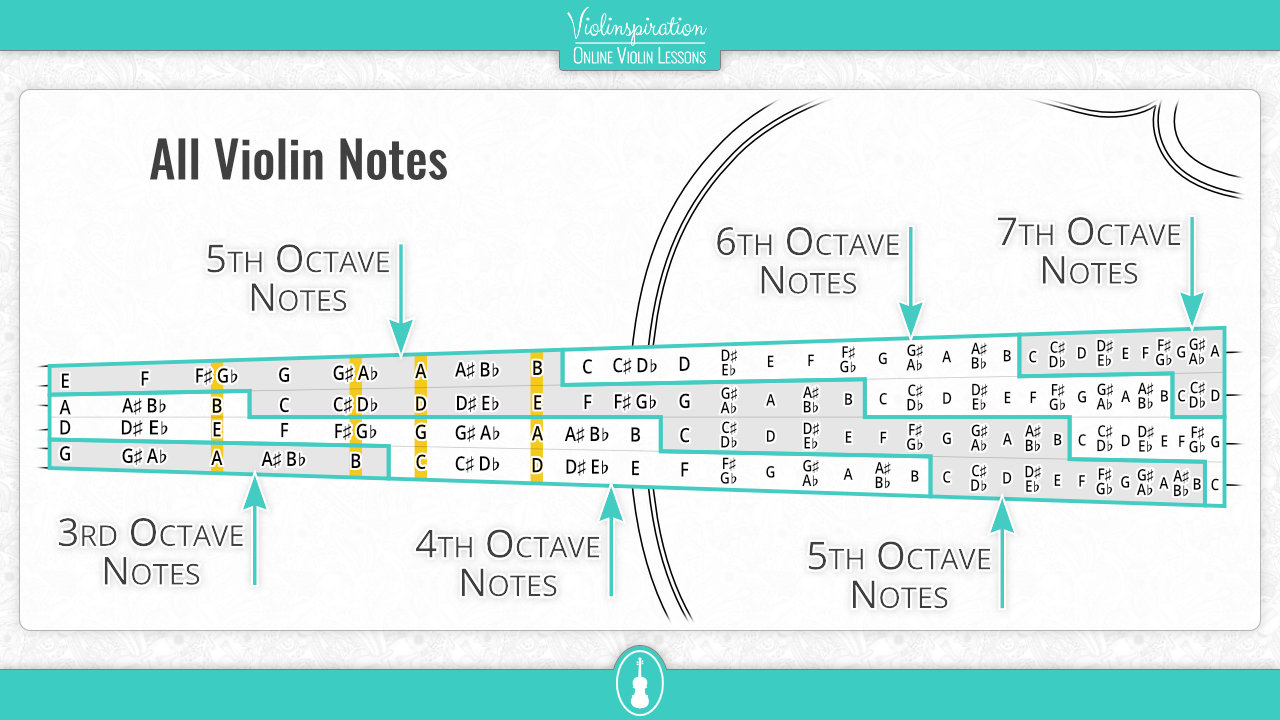
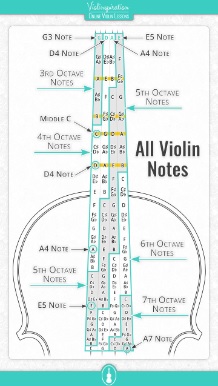
Download Poster with
All Violin Notes
on the Fingerboard
High-quality poster
What is the formula for chromatic scale?
There are generally two ways of playing the chromatic scale on the violin, each has its benefits. There is no right way and you might find yourself using both, depending on the situation.
The numbers below represent the fingers you’ll have to use.
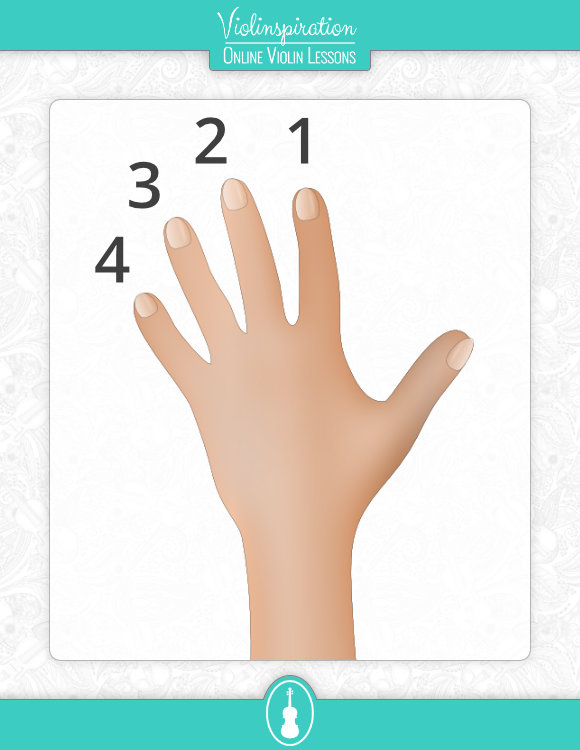
A. Shifting individual fingers: 1 – 1 – 2 – 2 – 3 – 3 – 4
This pattern is much easier to learn for a beginner, especially if you’re not familiar with the positions, as each finger moves in the area it normally plays in the first position.
There’s even a bit easier version of this pattern: 1 – 1 – 2 – 2 – 3 – 4. In this case, you’d play the next note on the open string above. Watch my quick tutorial on this in an Improver level 5 lesson (Julia’s Violin Academy members only) and practice the scale with my violin play-alongs or the piano accompaniment.
When using this pattern, you will most likely hear some sliding sounds, which might be sometimes desirable.
During fast passages, it is possible to eliminate the sliding sound by doing rapid moves with the left-hand fingers, but I’d recommend it only for more experienced students.
B. Shifting whole hand: 1 – 2 – 1 – 2 – 3 – 4
A variation of this pattern can be: 1 – 2 – 3 – 1 – 2 – 3 but the general idea is to switch fingers for each half step. This pattern is sometimes called “Carl Flesch fingering”, named after the Hungarian violinist and teacher whose scale system I have recommended several times in my blog posts.
This pattern is useful in the following situations:
- When playing fast passages
- When you strive for a smooth, legato sound
- When you want to avoid hearing glissando
When to choose which method
Assuming you’ve learned both patterns of the violin chromatic scale, you might wonder which to choose when.
If you have to play a chromatic passage, you might find yourself trying to use both methods. The final choice depends on a variety of reasons. For example, picking the first method might seem easier but if you’re playing with an ensemble, the glissando might affect the overall sound. If you’re playing solo, I suggest you make the decision based on what you have to play before or after, as well as what feels better suited for the piece you’re playing.
Chromatic Scales in Violin Pieces
Here are some well-known music pieces that use the chromatic scale, or part of it, to show you how you can benefit by learning it!
Dance of the Sugar Plum Fairy
The Dance of the Sugar Plum Fairy is a famous piece from Tchaikovsky’s The Nutcracker. In act 2 of the ballet, the celesta is introduced to the Russian music scene. The notes in chromatic descending order, along with the timbre of the celesta, are describing “drops of water shooting from a fountain”.
Watch my free video tutorial below, or if you’re a member of Julia’s Violin Academy, click here and watch replays of the live classes during which we studied an easy version of this popular theme in detail.
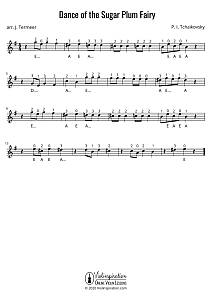
Dance of the Sugar Plum Fairy – P. I. Tchaikovsky
Free Violin Sheet Music
Phantom of the Opera
The main theme from the Phantom of the Opera musical by Andrew Lloyd Webber is one of the most well-known pieces that have a chromatic passage. You can learn an easy version of the tune with my tutorial!
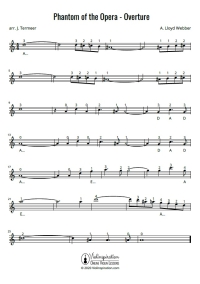
Flight of the Bumblebee
Flight of the Bumblebee is an orchestral interlude written by Nikolai Rimsky-Korsakov for his opera The Tale of Tsar Saltan, intended to musically evoke the seemingly chaotic and rapidly changing flying pattern of a bumblebee. It is probably the most often used classical piece that appears in pop culture, including movies, shows, and commercials.
Famous violinist David Garett won World’s Fastest Violinist Guinness Award playing this piece. Here’s an interesting cover:
How do you Practice the Chromatic Scale on the Violin?
- Pick the pattern you’ll use and an octave, e.g. start on the open A or D string.
- Play all the semitones within one or 2 octaves in ascending and descending order.
- Often check you intonation with a tuner to make sure that you put your finger in the correct spots.
- When you’re familiar with the notes, try incorporating metronome in your chromatic scales practice.
Start at slow bpm and gradually increase the speed. You can also try different rhythmic patterns to make the practice more fun!
Download the chromatic scale booklet below and start practicing right away:

Chromatic Scales for Violin
Free Exercises Set
Final Note
The chromatic scale is a very useful tool. It helps you learn the notes on the fingerboard that are half step apart and encourages you to learn shifting. Moreover, it is used in some of the most popular pieces, so you can prepare to play them by first learning chromatic sales.
I hope that this article helped you understand what a chromatic scale is and how to practice it.



